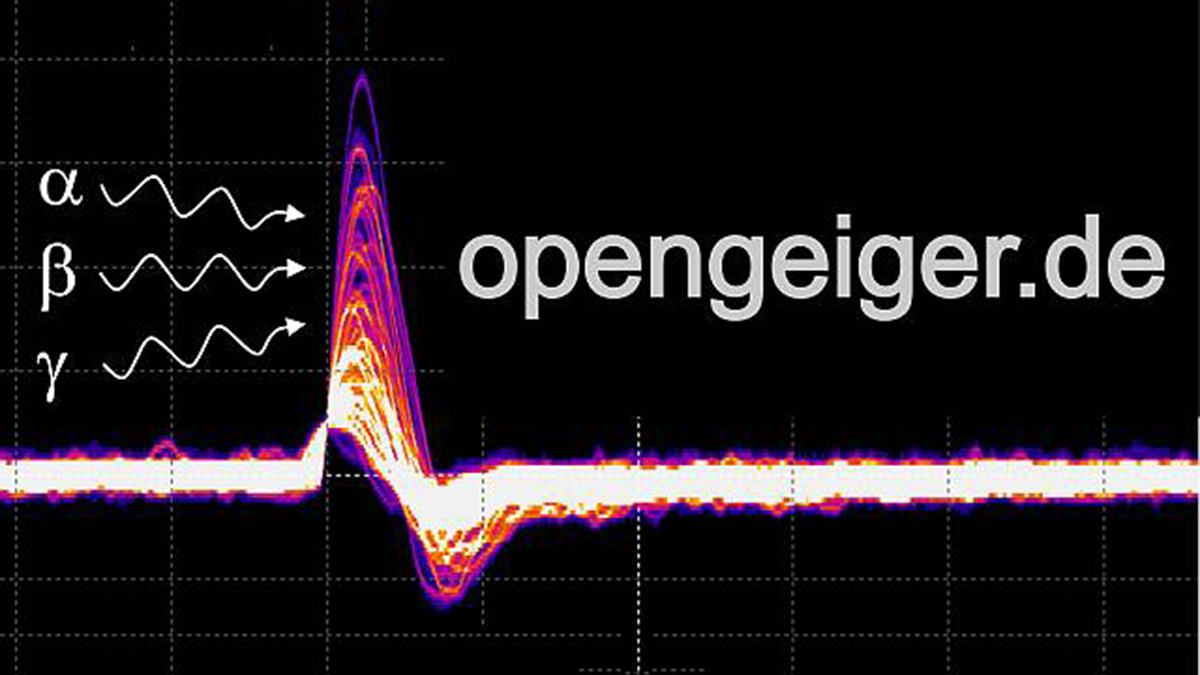Traditional versus PIN Diode Geiger Counter
Do-it-yourself PIN-diode counter
Intro to the basics (pdf-file)
Complete do-it-yourself instructions
- The “Stuttgarter Geigerle”
- The most simple and cheapest solution: The “Mini-Geigerle” used with the PC-soundcard
- The “Stuttgarter Geigerle” for thru hole assembly
Further infos on PIN-diode counter
- Detection of alpha radiation with the PIN-diode counter
- Detection of weak radioactivity given the example of a potassium fizzy tablet
- Self-made alpha- beta- and gamma-sensitive radiation detectors on the basis of a low cost PIN-diode
li>Spectroscopy with the Mini-Geigerle
DIY instructions for traditional Geiger-Muller tube geiger counters
Arduino
The Tino Kit – now available for the interessted community
The Radiation Detection Shield “Tino” for the Arduino – professional calibrated measurement of radioactivity with the Teviso radiation sensor
The Tino Shield is a plug-on PCB stacked on an Arduino microcontroller board. With the Arduino it forms a real measurement instrument calibrated by Teviso, Switzerland, the manufacturer of the radiation sensor module. This shield is now available as kit for DIY assembly.
Arduino programs for the Tino shield can be found on the download page.
Ordering options, prices and shipment infos

Radon
Yes, it really works: You can measure the specific radon activity in a given air volume with a geiger counter.
This graph shows the measurement result of radon exhalation in a chamber which was filled with a granite stone from Menzenschwand (Black Forest area) at time zero. After ten days the stone was removed carefully and the chamber was closed again continuing the measurement. Finally, after 18 days the chamber was opened completely and the detector was kept on running. The pile-up of radon activity with the half-life constant of 3.8 days is clearly visible followed by disintegration with the same time constant. Well, it was not a normal geiger counter that was used for this measurement. It was the “Radon-Geigerle”, a modified version of the “Stuttgarter Geigerle” that was made sensitive to alpha radiation. However, the cost and effort was surprisingly small, it is only required to exchange the photodiodes. During further investigation it turned out that even regular granite building material exhales quite a lot of radon depending on the source of origin and the content of uranium. More in the follwing documents.
Analysis of the radon exhalation from granites with the “Stuttgarter Geigerle”
Comparative measurements with a commercial radon monitor from different granite samples
The respective research work at the Jugendforschungszentrum in Nagold was rewarded during the regional contest “Jugend-Forscht” in the black forest region with a 2nd prize. In addition the juniors received a special award of the German society for destruction-free analysis (DGFZP).
Radon and radioactivity in education
Radon exhaling from natural stones and building materials are a perfect means to impressively and instructively demonstrate radioactivity in education. Here is a description of a ready and easy to use experiment either with the Geiger counter or the Arduino based Tino kit:
Proof of Radon Exhalation from Building Materials and Natural Stones – A Completely Hazard-free, Instructive and Simple Experiment on Radioactivity
Links to more electronic circuits and interesting infos
There is not always a need for a PIN-diode (from Charles Wenzel’s techlib.com)
Photodiode Monitoring with OP-Amps, Burr Brown (today Texas Instruments)
Detection of Optical Radiation, A. Rogalski and Z. Bielecki, 2004
Single Supply, 1.5nV/sqrt Hz,Photodiode Amplifier, LT Journal August 2002
An Introduction to Semiconductor Radiation Detectors, C.W. Thiel 1999
PIN Photodiode Based X and Gamma Ray Detectors, Erhan Emirhan Cenap S. Ozben, 2010
Photodiode Amplifiers, Paul Rako National Semiconductors, 2004
Side notes
Radioactivity Counter App for Android based mobile phones
Rolf-Dieter Klein developped an Android app that uses the camera sensor of a mobile phone as a detector for radioactivity and thus converts the mobile phone into a geiger counter. For some devices this works quite well since the author provides support for the settings of the key parameters. For other phones the app does not work that well. Since the camera sensor is pretty similar to a PIN-diode detector a comparable strategy for finding the comparator settings can be used for the Stuttgarter Geigerle. Therefore it is possible to learn a lot from this app with respect to the correct comparator threshold. Here you’ll find a description telling you how to do the adjustment of the parameter settings for the Android phone app on your own after having understood the principle of operation.
Links to the website of the app www.hotray-info.de
For more detail: PIN diode counters
